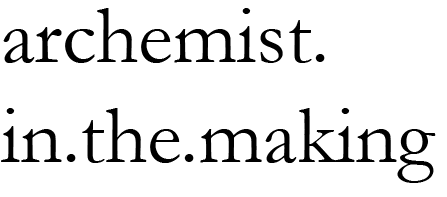If I was facing the five year old me, I would watch her in amazement as she tries to explain to me what was happening amongst the strange arrangement of chairs and cushions, she would point her finger rapidly at the drawing that would make no sense to me while to her it was a map telling us how to navigate through this world full of lava.
It’s quite strange really, to think about how our younger selves were simply architects without knowing. We are unconsciously being decisive about how the world was to be. From building forts to running on the grassy hills there was an imaginary world before us while narrating as we go - quite similar to the heroine of Porter Robinson & Madeon’s Shelter, where the she would simply live in a world that changes according to her drawings on a tablet. While the song is quite a techno lullaby, watching the video unfolding into something rather quite dark is really disturbing, however that would leave it to the audience’s interpretation of the fate of the heroine and she realises the truth behind herself and the tablet she was given.
I suppose the imagination of a child has greater potential than we do when it comes to architecture or anything in general. From young our make-believe has enabled us to fill in the empty scenes of our rooms - I was very much attempted to replicate storylines from picture books of Milo the Mouse, Clifford the Red Dog, Rainbow Fish with my friends; turning my empty bookshelf into a dollhouse for many of my dolls, and being the voice actor for many of my dolls. However, all of that has now fizzled out, and the time that I would use to play with my toys is now replaced by mediocre chores otherwise ironically wasting my time on the internet.
So at what point did I lose my unapologetic creativity with architecture? Sure, it is understanding that maturity and understanding the kind of world we are living in that would be the defining factor that forces us to leave our innocent world behind. Albeit, my friend once told me that as we learn, we believe in the knowledge that is being given to us due to our trust in those who passed on the information to us in the first place. Having said, perhaps it is because of who we communicate with and being exposed to that has somehow impacted our imagination to a certain extent. Let alone, even if it is strictly architecture speaking, our understanding of the term architecture has been over defined to a point where we are unable to properly comprehend the concept of architecture or being to explain the meaning of architecture in the first place.
If that is the case, then we would need to examine how we have been exposed to architecture from the very beginning. Unknowingly, we were all taught architecture in forms of narrative: whether it was the protagonist jumping over a bridge, the dog running into a bushy area by the brick wall - it has always been there. We have failed to realise that the narrative heavily relies heavily on the setting or scenes that provides a foundation for the readers to understand what is happening. The context of the story fleshes out a world that would allow the story working, why we never knew this is not our fault, rather is the failure to recongise that term of architecture has been either over stretched or narrowed down to what we know as ‘buildings’ today. In other words, we have lacked the ability to identify what was the context that would allow a story to being.
Having said, we can’t discredit those stories that has been transcribed into something for us to see. Till this day, screen adaptations still amaze me in terms of the background that shapes the storyline. How the production team to design the stage set in detail that would allow the audience to understand the emotions or time period is still something that I question repeatedly. Albeit, we still need to respect that there will still be differences in how the audience and the directors see it - once again, those differences may only be picked up once we have seen the whole production ourselves.
Then what if we realise the world that the author has built upon within these novels or graphic novels? Would we be able to ask questions in a better detail? Otherwise, do we not question what is happening because we simply accept that it is there? Or has studying architecture for three years has made me question why our general knowledge of architecture is rather narrow? Perhaps, from asking this we need to take a step back and re-examine the intentions of the author and the illustrators of these narratives as well, maybe sometimes the scenery is simply there for us to grasp the atmosphere of the plot line, let alone allow ourselves to be more immersed in the story for the text and images has provided a believable context.
So next time when you read a book or pick up the story, tell me - can you see the kind of world the protagonist is living in? Otherwise can you marvel at how the illustrators have designed the world?
